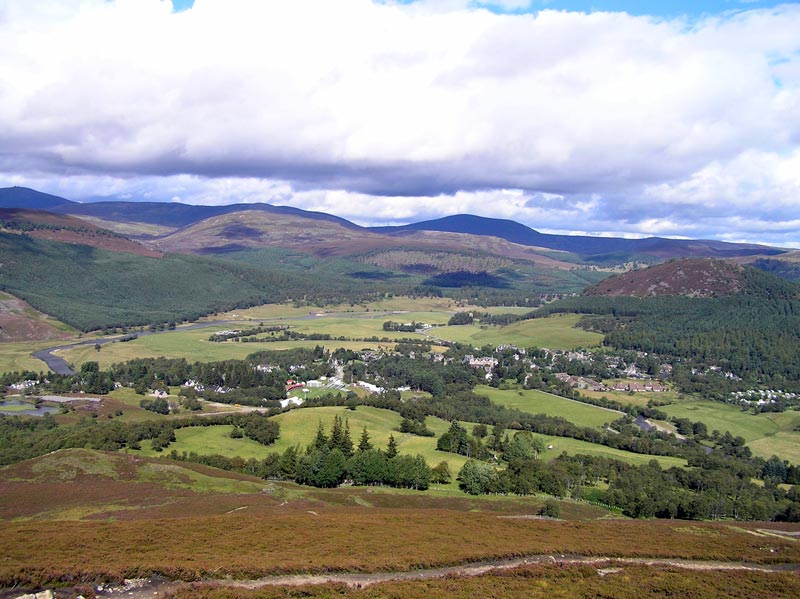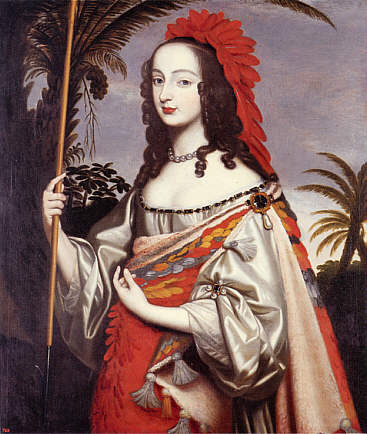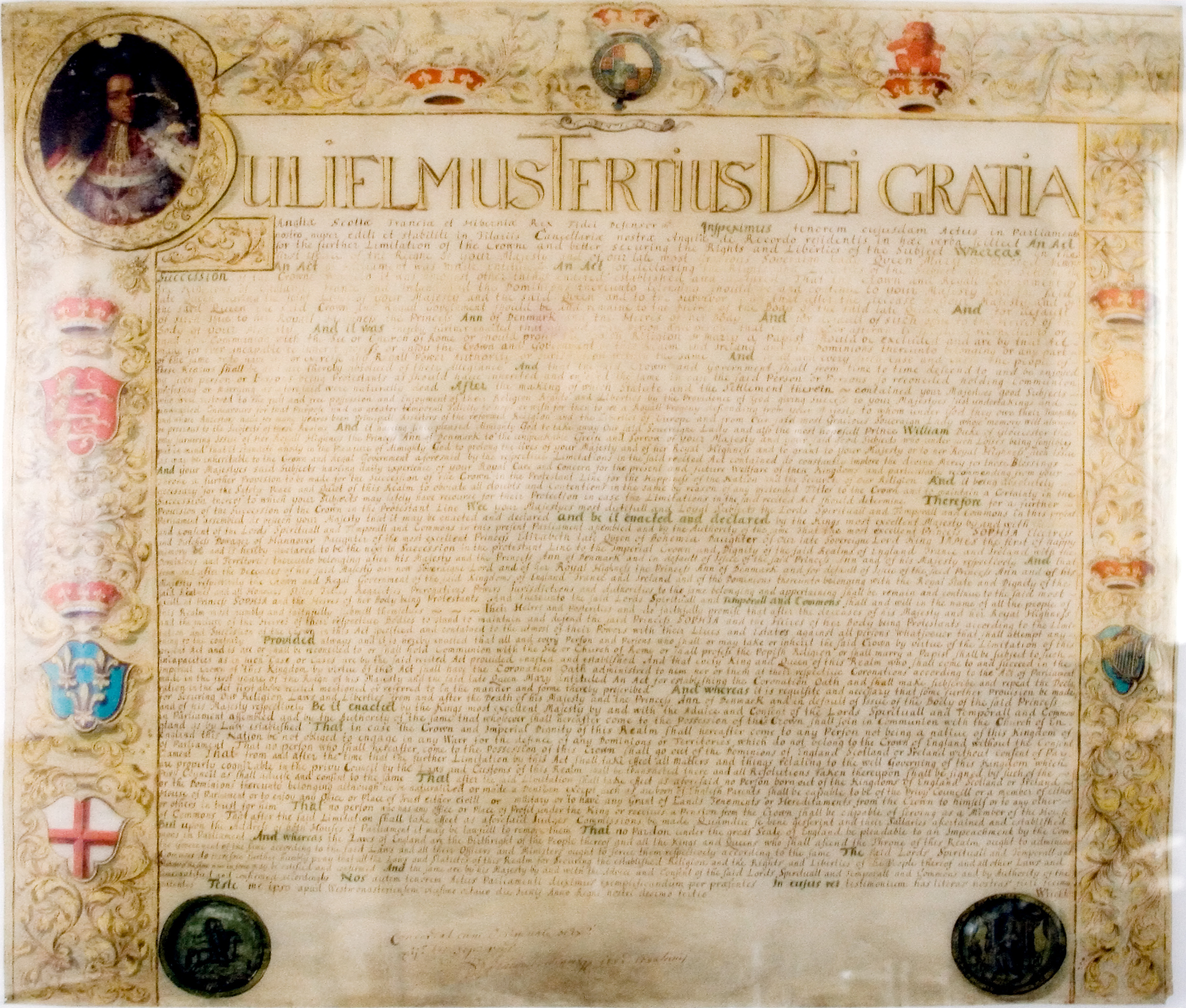|
The Fifteen
The Jacobite rising of 1715 ( gd, Bliadhna Sheumais ; or 'the Fifteen') was the attempt by James Edward Stuart (the Old Pretender) to regain the thrones of England, Ireland and Scotland for the exiled Stuarts. At Braemar, Aberdeenshire, local landowner the Earl of Mar raised the Jacobite standard on 27 August. Aiming to capture Stirling Castle, he was checked by the much-outnumbered Hanoverians, commanded by the Duke of Argyll, at Sheriffmuir on 13 November. There was no clear result, but the Earl appeared to believe, mistakenly, that he had won the battle, and left the field. After the Jacobite surrender at Preston (14 November), the rebellion was over. Background The 1688 Glorious Revolution deposed James II and VII, who was replaced by his Protestant daughter Mary II and her Dutch husband William III, ruling as joint monarchs. Shortly before William's death in March 1702, the Act of Settlement 1701 definitively excluded Catholics from the throne, among them James†... [...More Info...] [...Related Items...] OR: [Wikipedia] [Google] [Baidu] |
Jacobite Risings
, war = , image = Prince James Francis Edward Stuart by Louis Gabriel Blanchet.jpg , image_size = 150px , caption = James Francis Edward Stuart, Jacobite claimant between 1701 and 1766 , active = 1688–1780s , ideology = * Legitimist support for the senior line of the Stuarts * Indefeasible dynastic right * Divine right of kings * Irish nationalism * Scottish nationalism , leaders = , leader1_title = Military leaders , leader1_name = , headquarters = , area = British Isles , size = , allies = *Papal States (Until 1788) , opponents = Jacobitism (; gd, Seumasachas, ; ga, SeacaibĂteachas, ) was a political movement that supported the restoration of the senior line of the House of Stuart to the British throne. The name derives from the first name of James II and VII, which in Latin translates as '' Jacobus''. When James went into exile aft ... [...More Info...] [...Related Items...] OR: [Wikipedia] [Google] [Baidu] |
Braemar
Braemar is a village in Aberdeenshire, Scotland, around west of Aberdeen in the Highlands. It is the closest significantly-sized settlement to the upper course of the River Dee sitting at an elevation of . The Gaelic ''BrĂ igh MhĂ rr'' properly refers to the area of upper Marr (as it literally means), i.e. the area of Marr to the west of Aboyne, the village itself being Castleton of Braemar (''Baile a' Chaisteil''). The village used to be known as ''Cinn Drochaid'' (bridge end); ''Baile a' Chaisteil'' referred to only the part of the village on the east bank of the river, the part on the west bank being known as ''Ach an Droighinn'' (thorn field). Geography Braemar is approached from the South on the A93 from Glen Clunie and the Cairnwell Pass and from the East also on the A93 from Deeside. Braemar can be approached on foot from the West through Glen Tilt, Glen Feshie, Glen Dee (by the Lairig Ghru), and Glen Derry (by the Lairig an Laoigh). Braemar is within a one-and-a-hal ... [...More Info...] [...Related Items...] OR: [Wikipedia] [Google] [Baidu] |
Whigs (British Political Party)
The Whigs were a political faction and then a political party in the Parliaments of England, Scotland, Ireland, Great Britain and the United Kingdom. Between the 1680s and the 1850s, the Whigs contested power with their rivals, the Tories. The Whigs merged into the new Liberal Party with the Peelites and Radicals in the 1850s, and other Whigs left the Liberal Party in 1886 to form the Liberal Unionist Party, which merged into the Liberals' rival, the modern day Conservative Party, in 1912. The Whigs began as a political faction that opposed absolute monarchy and Catholic Emancipation, supporting constitutional monarchism with a parliamentary system. They played a central role in the Glorious Revolution of 1688 and were the standing enemies of the Roman Catholic Stuart kings and pretenders. The period known as the Whig Supremacy (1714–1760) was enabled by the Hanoverian succession of George I in 1714 and the failure of the Jacobite rising of 1715 by Tory rebels. The Whig ... [...More Info...] [...Related Items...] OR: [Wikipedia] [Google] [Baidu] |
George I Of Great Britain
George I (George Louis; ; 28 May 1660 – 11 June 1727) was King of Great Britain and Ireland from 1 August 1714 and ruler of the Electorate of Hanover within the Holy Roman Empire from 23 January 1698 until his death in 1727. He was the first British monarch of the House of Hanover as the most senior Protestant descendant of his great-grandfather James VI and I. Born in Hanover to Ernest Augustus and Sophia of Hanover, George inherited the titles and lands of the Duchy of Brunswick-Lüneburg from his father and uncles. A succession of European wars expanded his German domains during his lifetime; he was ratified as prince-elector of Hanover in 1708. After the deaths in 1714 of his mother Sophia and his second cousin Anne, Queen of Great Britain, George ascended the British throne as Anne's closest living Protestant relative under the Act of Settlement 1701. Jacobites attempted, but failed, to depose George and replace him with James Francis Edward Stuart, Anne's Catholi ... [...More Info...] [...Related Items...] OR: [Wikipedia] [Google] [Baidu] |
Sophia Of Hanover
Sophia of Hanover (born Princess Sophia of the Palatinate; 14 October 1630 – 8 June 1714) was the Electress of Hanover by marriage to Elector Ernest Augustus and later the heiress presumptive to the thrones of England and Scotland (later Great Britain) and Ireland under the Act of Settlement 1701, as a granddaughter of James VI and I. Princess Sophia died less than two months before she would have become Queen of Great Britain. Consequently, her son (and grandson of Elizabeth Stuart, Queen of Bohemia) George I, succeeded her first cousin once removed, Queen Anne, to the British throne, and the succession to the throne has since been defined as, and composed entirely of, her legitimate and Protestant descendants. Sophia was born in 1630 to Frederick V of the Palatinate, a member of the House of Wittelsbach, and Elizabeth Stuart, daughter of King James VI and I. She grew up in the Dutch Republic, where her family had sought refuge after the sequestration of their Electorate d ... [...More Info...] [...Related Items...] OR: [Wikipedia] [Google] [Baidu] |
Anne, Queen Of Great Britain
Anne (6 February 1665 – 1 August 1714) was Queen of England, Scotland and Ireland from 8 March 1702 until 1 May 1707. On 1 May 1707, under the Acts of Union, the kingdoms of England and Scotland united as a single sovereign state known as Great Britain. Anne continued to reign as Queen of Great Britain and Ireland until her death. Anne was born in the reign of Charles II to his younger brother and heir presumptive, James, whose suspected Roman Catholicism was unpopular in England. On Charles's instructions, Anne and her elder sister Mary were raised as Anglicans. Mary married their Dutch Protestant cousin, William III of Orange, in 1677, and Anne married Prince George of Denmark in 1683. On Charles's death in 1685, James succeeded to the throne, but just three years later he was deposed in the Glorious Revolution of 1688. Mary and William became joint monarchs. Although the sisters had been close, disagreements over Anne's finances, status, and choice of acquaintances ar ... [...More Info...] [...Related Items...] OR: [Wikipedia] [Google] [Baidu] |
Act Of Settlement 1701
The Act of Settlement is an Act of the Parliament of England that settled the succession to the English and Irish crowns to only Protestants, which passed in 1701. More specifically, anyone who became a Roman Catholic, or who married one, became disqualified to inherit the throne. This had the effect of deposing the descendants of Charles I, other than his Protestant granddaughter Anne, as the next Protestant in line to the throne was Sophia of Hanover, a granddaughter of James VI and I from his most junior surviving line, with the crowns descending only to her non-Catholic heirs. Sophia died shortly before the death of Queen Anne, and Sophia's son succeeded to the throne as King George I, starting the Hanoverian dynasty in Britain. The Act of Supremacy 1558 had confirmed the independence of the Church of England from Roman Catholicism under the English monarch. One of the principal factors which contributed to the Glorious Revolution was the perceived assaults made on the ... [...More Info...] [...Related Items...] OR: [Wikipedia] [Google] [Baidu] |
William III Of England
William III (William Henry; ; 4 November 16508 March 1702), also widely known as William of Orange, was the sovereign Prince of Orange from birth, Stadtholder of County of Holland, Holland, County of Zeeland, Zeeland, Lordship of Utrecht, Utrecht, Guelders, and Lordship of Overijssel, Overijssel in the Dutch Republic from the 1670s, and King of England, Monarchy of Ireland, Ireland, and List of Scottish monarchs, Scotland from 1689 until his death in 1702. As King of Scotland, he is known as William II. He is sometimes informally known as "King Billy" in Ireland and Scotland. His victory at the Battle of the Boyne in 1690 is The Twelfth, commemorated by Unionism in the United Kingdom, Unionists, who display Orange Order, orange colours in his honour. He ruled Britain alongside his wife and cousin, Queen Mary II, and popular histories usually refer to their reign as that of "William and Mary". William was the only child of William II, Prince of Orange, and Mary, Princess Royal an ... [...More Info...] [...Related Items...] OR: [Wikipedia] [Google] [Baidu] |
Mary II Of England
Mary II (30 April 166228 December 1694) was List of English monarchs, Queen of England, List of Scottish monarchs, Scotland, and Monarchy of Ireland, Ireland, co-reigning with her husband, William III of England, William III & II, from 1689 until her death in 1694. Mary was the eldest daughter of James, Duke of York, and his first wife Anne Hyde. Mary and her sister Anne, Queen of Great Britain, Anne were raised as Anglicans at the behest of their uncle, Charles II of England, King Charles II, although their parents both List of converts to Catholicism, converted to Roman Catholicism. Charles lacked legitimate children, making Mary second in the Succession to the British throne, line of succession. She Cousin marriage, married her first cousin, William of Orange, a Protestantism, Protestant, in 1677. Charles died in 1685 and James took the throne, making Mary heir presumptive. James's attempts at rule by decree and the birth of his son from a second marriage, James Francis Edwar ... [...More Info...] [...Related Items...] OR: [Wikipedia] [Google] [Baidu] |
James II And VII
James VII and II (14 October 1633 16 September 1701) was King of England and King of Ireland as James II, and King of Scotland as James VII from the death of his elder brother, Charles II, on 6 February 1685. He was deposed in the Glorious Revolution of 1688. He was the last Catholic monarch of England, Scotland, and Ireland. His reign is now remembered primarily for conflicts over religious tolerance, but it also involved struggles over the principles of absolutism and the divine right of kings. His deposition ended a century of political and civil strife in England by confirming the primacy of the English Parliament over the Crown. James succeeded to the thrones of England, Ireland, and Scotland following the death of his brother with widespread support in all three countries, largely because the principles of eligibility based on divine right and birth were widely accepted. Tolerance of his personal Catholicism did not extend to tolerance of Catholicism in general, and the ... [...More Info...] [...Related Items...] OR: [Wikipedia] [Google] [Baidu] |
Glorious Revolution
The Glorious Revolution; gd, Rèabhlaid Ghlòrmhor; cy, Chwyldro Gogoneddus , also known as the ''Glorieuze Overtocht'' or ''Glorious Crossing'' in the Netherlands, is the sequence of events leading to the deposition of King James II and VII of England and Scotland in November 1688, and his replacement by his daughter Mary II and her husband and James's nephew William III of Orange, de facto ruler of the Dutch Republic. A term first used by John Hampden (1653–1696), John Hampden in late 1689, it has been notable in the years since for having been described as the last successful invasion of England as well as an internal coup, with differing interpretations from the Dutch and English perspectives respectively. Despite his personal Catholicism, a religion opposed by the Protestant majority in England and Scotland, James became king in February 1685 with widespread support in both countries, since many feared that his exclusion would lead to a repetition of the 16391651 Wa ... [...More Info...] [...Related Items...] OR: [Wikipedia] [Google] [Baidu] |
Prince James Francis Edward Stuart By Alexis Simon Belle
A prince is a male ruler (ranked below a king, grand prince, and grand duke) or a male member of a monarch's or former monarch's family. ''Prince'' is also a title of nobility (often highest), often hereditary, in some European states. The female equivalent is a princess. The English word derives, via the French word ''prince'', from the Latin noun , from (first) and (head), meaning "the first, foremost, the chief, most distinguished, noble ruler, prince". Historical background The Latin word (older Latin *prīsmo-kaps, literally "the one who takes the first lace/position), became the usual title of the informal leader of the Roman senate some centuries before the transition to empire, the ''princeps senatus''. Emperor Augustus established the formal position of monarch on the basis of principate, not dominion. He also tasked his grandsons as summer rulers of the city when most of the government were on holiday in the country or attending religious rituals, and, for ... [...More Info...] [...Related Items...] OR: [Wikipedia] [Google] [Baidu] |











